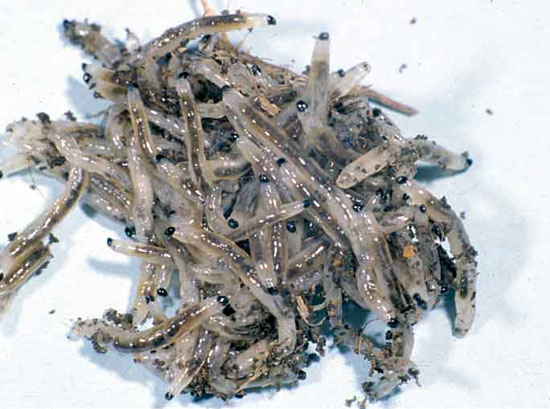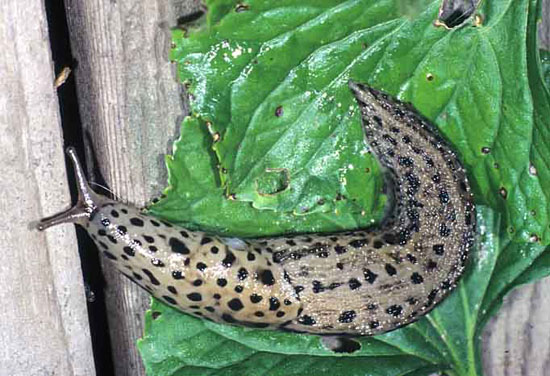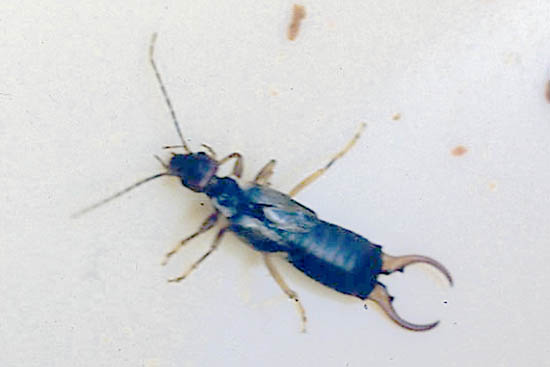Issue 10, June 26, 2009
Wet Weather Turf Pests
The heavy rainfall this spring has resulted in higher numbers of some insects and insect relatives than normal. We reported on crayfish being more numerous in an earlier issue of this newsletter. These conditions are also conducive to high numbers of millipedes, fungus gnats, slugs, and earwigs.
Millipedes are many-legged, hard-shelled, brownish, slow-moving insect relatives that feed on decaying plant material in moist situations. They have two pairs of legs per segment, totaling over one hundred legs per animal. When very numerous, they crawl out onto pavement forming masses or rows of them on the march. On damp mornings, they crawl up the sides of buildings. As they die, they coil up.

Fungus gnats feed on decaying organic matter as clear, elongate, legless, worm-like larvae with dark heads. Mature larvae of some species are about one-quarter inch long. Although normally not seen above ground, in wet situations they may appear as writhing masses or marching ropes of individuals at the edge of paved areas and on mulched areas.

Fungus gnat adults are tiny, blackish flies that hover as large swarms of males. These swarms are a couple of feet across and tend to hover over upright objects such as fence posts, shrubs, and peoples' heads. These swarms are used by the males to attract females for mating.
Slugs are shell-less snails that feed on dead organic matter. They are soft-bodied with a pair of tentacles, each bearing an eye at the tip. The gray garden slug is very common, dark gray, and about one inch long. The other common species is the spotted garden slug, which is up to three inches long but can extend to about six inches. It is brownish with obvious dark spots.

High moisture levels will allow slugs to leave turf and mulched areas to climb on lawn furniture and up the sides of houses, particularly at night and damp mornings. They leave slime trails wherever they go that glisten like silver ribbons in the morning sunlight. Slugs eat holes in the leaves of thin-leaved, shade-loving plants such as hosta, violets, and impatiens.
Earwigs are about five-eighths inch long and reddish-brown with large pincers called forceps protruding from the posterior end. These insects are turning from nymphs into adults at this time. As adults, they are much more active, becoming obvious in their activities. They are nocturnal insects, hiding in cracks and crevices during the day. They work their way into buildings as well. People commonly find them under damp clothes and along baseboards indoors as well as in crevices of outdoor furniture and playground equipment. Landscapers notice them under loose pieces of bark.

Earwigs feed primarily on decaying organic matter and prefer moist locations. They will also feed on the leaves and flower petals of rose, daylily, dahlia, zinnia, and other flowers. They are commonly found hiding in the heads of lettuce and cabbage. They are also predators, feeding on adult fleas and other insects.
All of these insects are more numerous in areas with high amounts of dead organic matter and moisture. They will be more numerous in thatchy turf areas that are kept moist. Lawn care clients that over-water and insist on high fertilization will have more of these creatures than others. Core-aerification of turf along with appropriate fertilization and irrigation can reduce their numbers. Clients who mulch too deeply will also have more of these animals. Two to three inches or less of mulch is recommended.
Millipedes are not effectively controlled with pesticide applications. Fungus gnat larvae are also difficult to control with insecticides. Slugs can be controlled with slug baits containing iron phosphate (Sluggo, Escar-Go) or metaldehyde (Deadline). Earwigs can be controlled on foliage with carbaryl (Sevin) or pyrethroids. Do not spray blossoms. They can be kept out of houses with permethrin foundation sprays.--Phil Nixon
Author:
Phil Nixon